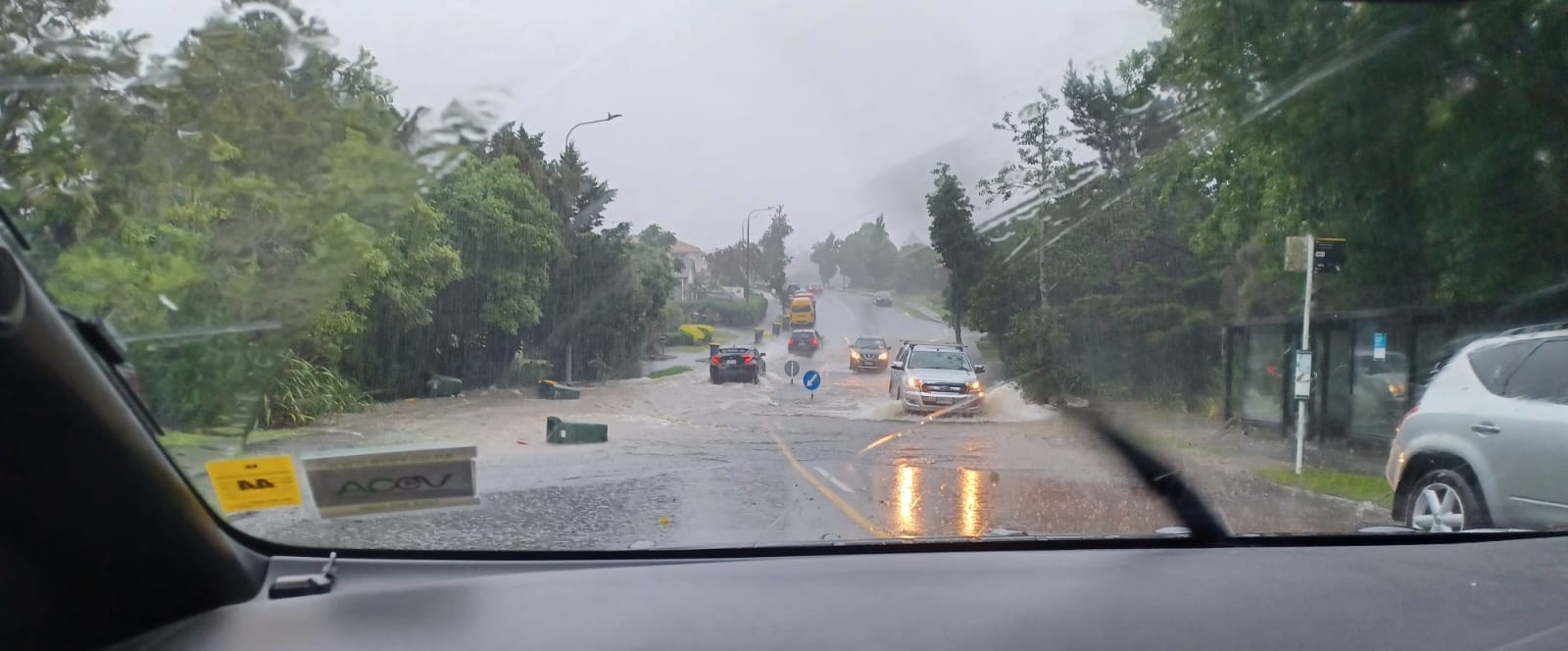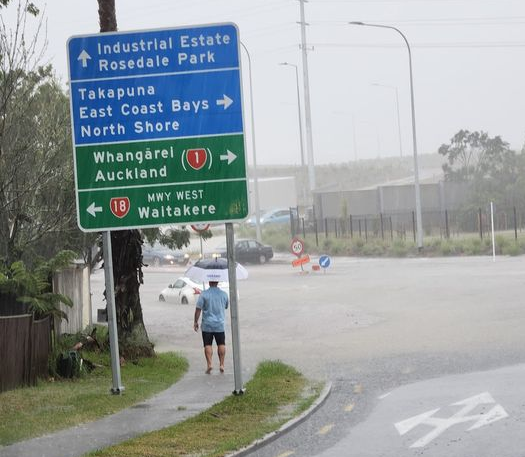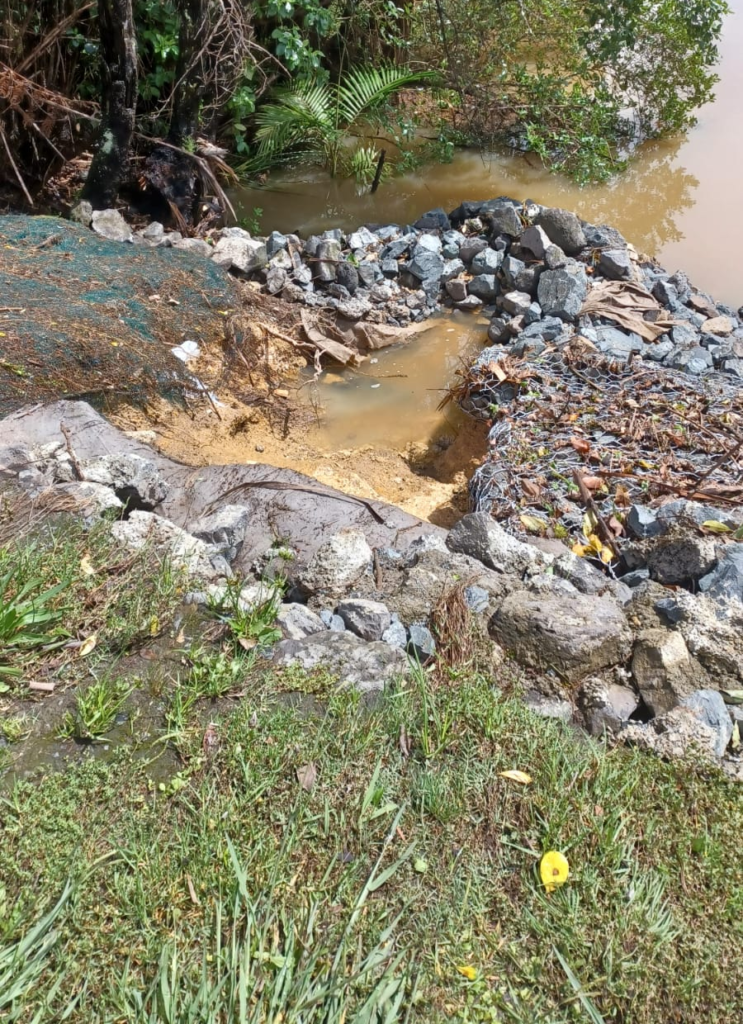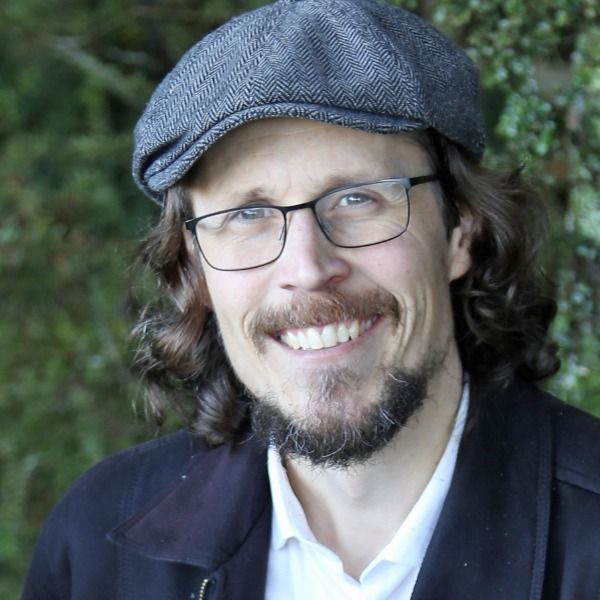On Friday 27 January Auckland flooded. To be honest we got off lightly here in Unsworth Heights, on the North Shore. On Friday night the power went out, so my son and I got in our car and drove off to get pizza, and play Magic the Gathering at our local games store. On the way we saw that many of the streams that normally were culverted under the road were now flowing freely across the road.

We avoided Caribbean Drive, as I knew this overland flow path would be deeper than other flooding. The water simply had nowhere else to go; even though they had just put in bigger drain pipes, of course it was going to flood here. So we made it to the games store safely.

The next day we visited our conservation project at the Unsworth Reserve to survey the damage. We lost a few carex off the side of the stream, where banks had collapsed. But the areas we had weeded and planted coped a lot better than areas that we had not weeded recently. The putaputaweta and kahikatea trees we planted had roots designed to hold the banks in the torrent , while the carex bowed as it created resistance that weakened the power of the flood. While in other locations the flood ripped out the unrelenting Cestrum nocturnum damaging the banks and surrounding native trees. There is an analogy here to Jesus’ teaching in the Sermon on the Mount and how it has been used by traditions of nonviolent resistance.

The worst damage was not in the bush, but rather in “developed” areas. The city council is developing a sports field and has erected a large fence along its boundaries. This design of fence would normally have prevented sediment from washing off the build site, but it had just collected all the water coming off the sports field to a single point where water exploded into a new tributary, ripping up the field. This was right next to an area we planted last year; thankfully it looks like the water goes down the boundary of the area we planted – I only had to rescue one harakeke. But the sediment this dumped into the stormwater pond is going to cost the city council a lot of money to remove.


For me the strongest theological reflection is the concept of sabbath. Sabbath was not intended as a mark of ritual purity as it seems the Pharisees treated it, but rather it was about purity of relationship: of justice. The concept of sabbath providing justice for people is clearly seen in the setting of the sabbath years and the Jubilee years. However, unless we read scripture with ecological eyes we often miss that the sabbath year provided the productive soil its rest (Lev 25:40) and space for the wild animals to eat (Lev 25:7). The writer of 2 Chronicles references Leviticus 26:34&35 in attributing the exile of Judea as punishment and restitution for them not observing this sabbath. And one could argue that similar disasters and plagues have played the same role in other points of history. For example forests regrew and global temperatures fell whenever plagues swept through Europe, or when disease brought by conquistadors wiped out many native americans. Similarly the area around the Chernobyl nuclear meltdown now provides an abundance of wildlife as people have been driven away by catastrophe.
The more I read this stuff in scripture the more I reflect that the Lord’s Sabbath in Genesis 2 is of the same nature as the commands within the law of Moses. When God created humanity he made them his Image and in his likeness, giving them dominion over the earth. But what good would this have been if God did not rest from his work? How would we continue the work of creation and sustain the earth in the manner the creation story says God did, if the more authentic and powerful force of God was still at work? In order for humanity to fulfil its creational intention, God needed to first step back and give it space. Likewise when we observe sabbath we cease to express our dominance over the poor, the soils, and all other living things, and we let them recover their authentic created self.
Today when I observe Sabbath I rarely rest. The dominance of human activity, and its flow on consequences in the form of weeds and pests, in my neighbourhood is so strong that my rest would be meaningless. And so my sabbath is expressed by empowering other living things through volunteer work. By removing the weeds, composting them to make a rich potting mix, growing native plants, and returning them to the weeded soil, I am doing a little bit to remove the dominion of human activity so that the ecosystem can try to return to its creational intention. And it is where the land has observed these kinds of sabbaths that it held up the best during the flood. In contrast, where the city council had used a more dominant approach, drainage systems failed.

Damaged weir
But I think I can go further, because our modern economic system does not simply dominate through the time we work. We have dominated the land in ways that far exceed the imagination of any bronze age farmer. And as such our observance of sabbath needs an even greater retreat from domination. We can do this, have done this, and need to do this more, by voluntarily retreating from areas and making them ecological reserves. With more of these sabbath spaces we would not see the flooding we saw in Auckland. Caribbean Drive should have been a forested wetland rather than a road. More forested reserves further up the catchment would have held more of the flood and released it slowly. In the process of observing these principles of sabbath we could reduce CO2 emissions, while sequestering more carbon into the soil, averting potential climate catastrophe. I believe that God loves all his creation, and if we don’t give the land its sabbath, it might achieve it in spite of us.

